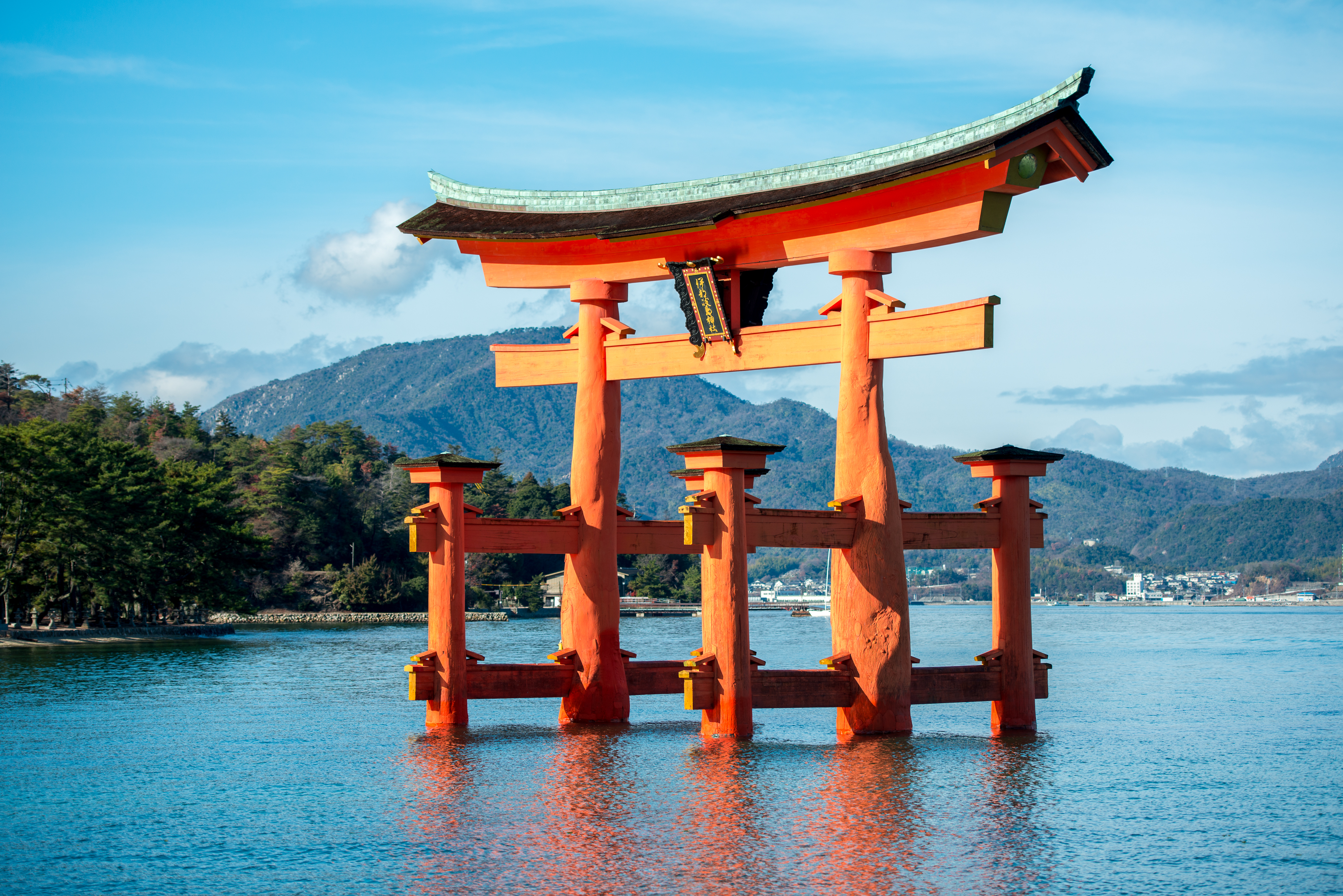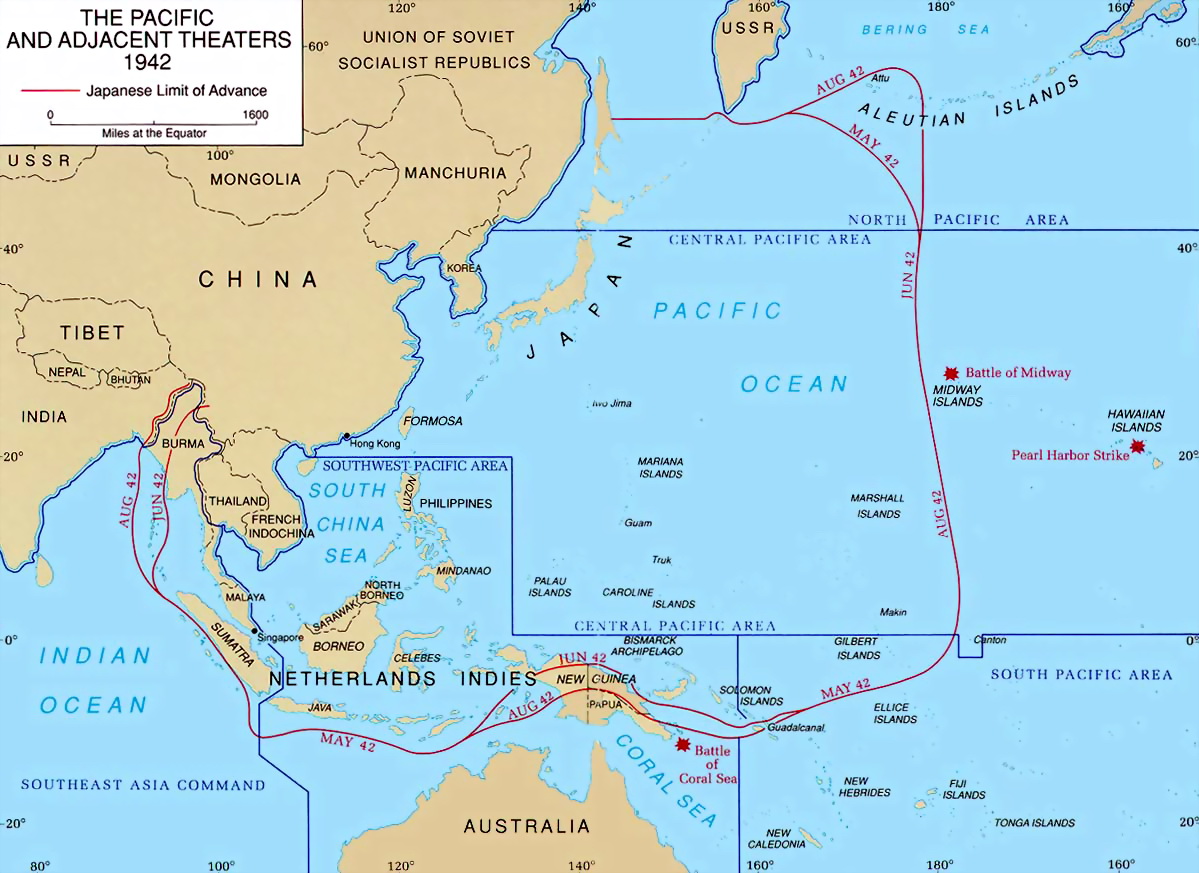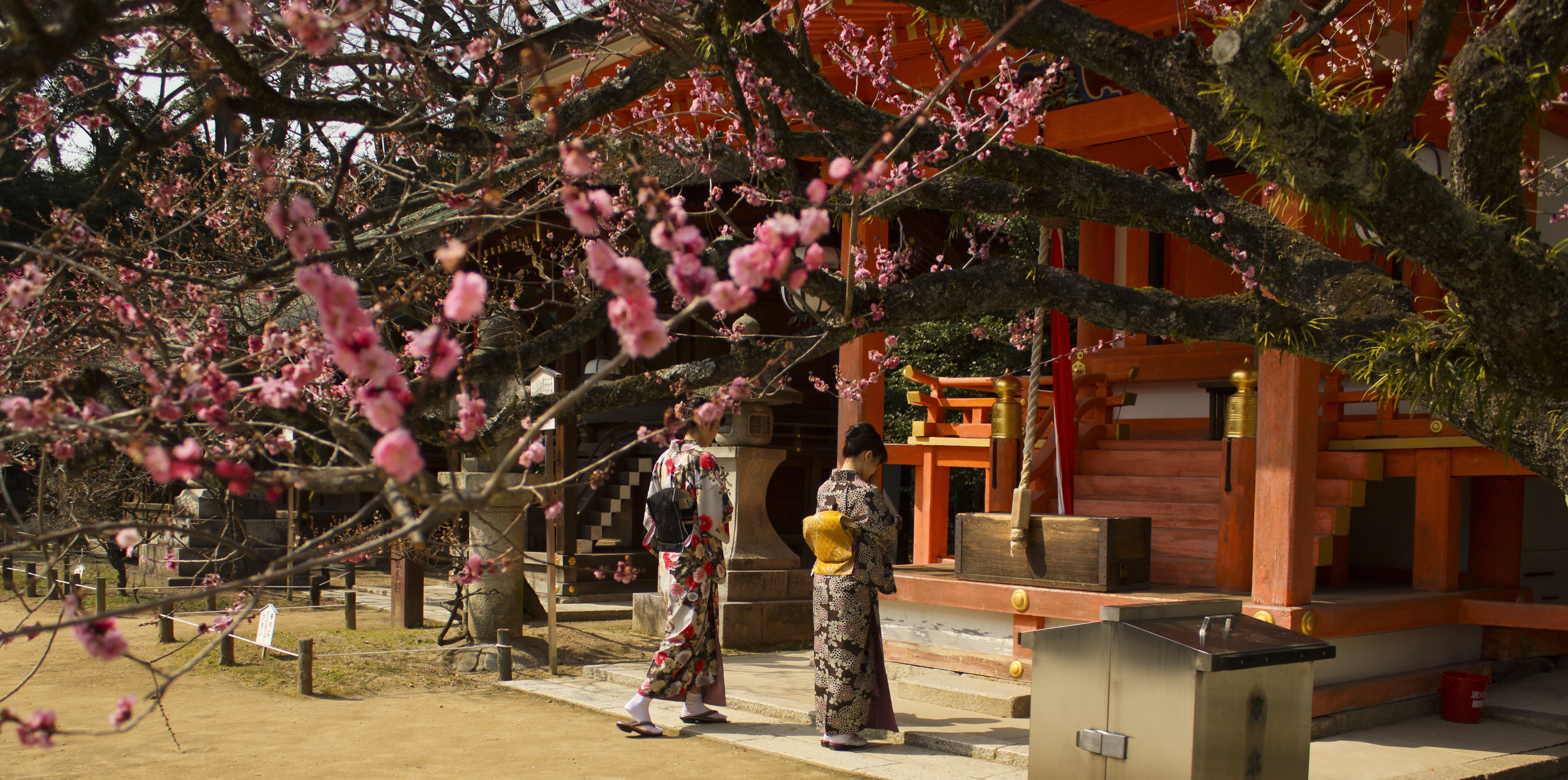|
Syonan Jinja
was a Shinto shrine at MacRitchie Reservoir, Singapore. Built by the Japanese Imperial Army during the Japanese occupation of Singapore in World War II, the shrine was destroyed directly before British forces re-occupied Singapore. Located deep inside the Central Catchment Nature Reserve (CCNR), the National Heritage Board (NHB) declared the site a historic site in 2002, although no plans have been made public so far to develop or make any significant changes to the site since the war. History The Syonan Jinja (Light of the South Shrine) was envisioned to be a shrine that commemorated the many Japanese soldiers and military personnel who fell in the Japanese conquest of Singapore. The construction of Syonan Jinja was significant. Major Yasuji Tamura, the commander of the Japanese 5th Division's Engineers Regiment and the man in-charge of the design and the construction of the Syonan Jinja, had envisioned for the shrine in Singapore to be best Shinto shrine in the whole of ... [...More Info...] [...Related Items...] OR: [Wikipedia] [Google] [Baidu] |
Shinto
Shinto () is a religion from Japan. Classified as an East Asian religion by scholars of religion, its practitioners often regard it as Japan's indigenous religion and as a nature religion. Scholars sometimes call its practitioners ''Shintoists'', although adherents rarely use that term themselves. There is no central authority in control of Shinto, with much diversity of belief and practice evident among practitioners. A polytheistic and animistic religion, Shinto revolves around supernatural entities called the . The are believed to inhabit all things, including forces of nature and prominent landscape locations. The are worshiped at household shrines, family shrines, and ''jinja'' public shrines. The latter are staffed by priests, known as , who oversee offerings of food and drink to the specific enshrined at that location. This is done to cultivate harmony between humans and and to solicit the latter's blessing. Other common rituals include the dances, rites of pa ... [...More Info...] [...Related Items...] OR: [Wikipedia] [Google] [Baidu] |
Battle Of Singapore
The Fall of Singapore, also known as the Battle of Singapore,; ta, சிங்கப்பூரின் வீழ்ச்சி; ja, シンガポールの戦い took place in the South–East Asian theatre of the Pacific War. The Empire of Japan captured the British stronghold of Singapore, with fighting lasting from 8 to 15 February 1942. Singapore was the foremost British military base and economic port in South–East Asia and had been of great importance to British interwar defence strategy. The capture of Singapore resulted in the largest British surrender in its history. Prior to the battle, Japanese General Tomoyuki Yamashita had advanced with about 30,000 men down the Malayan Peninsula in the Malayan campaign. The British erroneously considered the jungle terrain impassable, leading to a swift Japanese advance as Allied defences were quickly outflanked. The British Lieutenant-General, Arthur Percival, commanded 85,000 Allied troops at Singapore, although many ... [...More Info...] [...Related Items...] OR: [Wikipedia] [Google] [Baidu] |
1942 Establishments In The Japanese Colonial Empire
Year 194 ( CXCIV) was a common year starting on Tuesday (link will display the full calendar) of the Julian calendar. At the time, it was known as the Year of the Consulship of Septimius and Septimius (or, less frequently, year 947 ''Ab urbe condita''). The denomination 194 for this year has been used since the early medieval period, when the Anno Domini calendar era became the prevalent method in Europe for naming years. Events By place Roman Empire * Emperor Septimius Severus and Decimus Clodius Septimius Albinus Caesar become Roman Consuls. * Battle of Issus: Septimius Severus marches with his army (12 legions) to Cilicia, and defeats Pescennius Niger, Roman governor of Syria. Pescennius retreats to Antioch, and is executed by Severus' troops. * Septimius Severus besieges Byzantium (194–196); the city walls suffer extensive damage. Asia * Battle of Yan Province: Warlords Cao Cao and Lü Bu fight for control over Yan Province; the battle lasts for over 100 d ... [...More Info...] [...Related Items...] OR: [Wikipedia] [Google] [Baidu] |
Religious Buildings And Structures Completed In 1942
Religion is usually defined as a social- cultural system of designated behaviors and practices, morals, beliefs, worldviews, texts, sanctified places, prophecies, ethics, or organizations, that generally relates humanity to supernatural, transcendental, and spiritual elements; however, there is no scholarly consensus over what precisely constitutes a religion. Different religions may or may not contain various elements ranging from the divine, sacred things, faith,Tillich, P. (1957) ''Dynamics of faith''. Harper Perennial; (p. 1). a supernatural being or supernatural beings or "some sort of ultimacy and transcendence that will provide norms and power for the rest of life". Religious practices may include rituals, sermons, commemoration or veneration (of deities or saints), sacrifices, festivals, feasts, trances, initiations, funerary services, matrimonial services, meditation, prayer, music, art, dance, public service, or other aspects of human culture. Religio ... [...More Info...] [...Related Items...] OR: [Wikipedia] [Google] [Baidu] |
Shinto Shrines In The Japanese Colonial Empire
Shinto () is a religion from Japan. Classified as an East Asian religion by scholars of religion, its practitioners often regard it as Japan's indigenous religion and as a nature religion. Scholars sometimes call its practitioners ''Shintoists'', although adherents rarely use that term themselves. There is no central authority in control of Shinto, with much diversity of belief and practice evident among practitioners. A polytheistic and animistic religion, Shinto revolves around supernatural entities called the . The are believed to inhabit all things, including forces of nature and prominent landscape locations. The are worshiped at household shrines, family shrines, and ''jinja'' public shrines. The latter are staffed by priests, known as , who oversee offerings of food and drink to the specific enshrined at that location. This is done to cultivate harmony between humans and and to solicit the latter's blessing. Other common rituals include the dances, rites of pass ... [...More Info...] [...Related Items...] OR: [Wikipedia] [Google] [Baidu] |
Religious Buildings And Structures In Singapore
Religion is usually defined as a social-cultural system of designated behaviors and practices, morals, beliefs, worldviews, texts, sanctified places, prophecies, ethics, or organizations, that generally relates humanity to supernatural, transcendental, and spiritual elements; however, there is no scholarly consensus over what precisely constitutes a religion. Different religions may or may not contain various elements ranging from the divine, sacred things, faith,Tillich, P. (1957) ''Dynamics of faith''. Harper Perennial; (p. 1). a supernatural being or supernatural beings or "some sort of ultimacy and transcendence that will provide norms and power for the rest of life". Religious practices may include rituals, sermons, commemoration or veneration (of deities or saints), sacrifices, festivals, feasts, trances, initiations, funerary services, matrimonial services, meditation, prayer, music, art, dance, public service, or other aspects of human culture. Religions have ... [...More Info...] [...Related Items...] OR: [Wikipedia] [Google] [Baidu] |
Meiji Shrine
, is a Shinto shrine in Shibuya, Tokyo, that is dedicated to the deified spirits of Emperor Meiji and his wife, Empress Shōken. The shrine does not contain the emperor's grave, which is located at Fushimi-momoyama, south of Kyoto. History After the emperor's death in 1912, the Japanese Diet passed a resolution to commemorate his role in the Meiji Restoration. An iris garden in an area of Tokyo where Emperor Meiji and Empress Shōken had been known to visit was chosen as the building's location. Beppyo shrines Construction began in 1915 under Itō Chūta, and the shrine was built in the traditional nagare-zukuri style, using primarily Japanese cypress and copper. The building of the shrine was a national project, mobilizing youth groups and other civic associations from throughout Japan, who contributed labor and funding. The main timbers came from Kiso in Nagano, and Alishan in Taiwan, then a Japanese territory, with materials being utilized from every Japanese pref ... [...More Info...] [...Related Items...] OR: [Wikipedia] [Google] [Baidu] |
National Heritage Board (Singapore)
The National Heritage Board (NHB) is a statutory board under the Ministry of Culture, Community and Youth (MCCY) of the Government of Singapore. It was formed on 1 August 1993. National Museums and Heritage Institutions The National Heritage Board operates the following national museums and heritage institutions. ; Museums # Asian Civilisations Museum # National Museum of Singapore # Peranakan Museum # Singapore Philatelic Museum (to be rebranded as Children's Museum Singapore) # Reflections at Bukit Chandu ; Heritage Institutions # Language # Preservation of Sites and Monuments # Heritage Conservation Centre - architecture and building project # Indian Heritage Centre # Malay Heritage Centre # Sun Yat Sen Nanyang Memorial Hall The Sun Yat Sen Nanyang Memorial Hall, also known as Wan Qing Yuan, and formerly as the Sun Yat Sen Villa, is a two-story colonial style villa in Balestier, Singapore. The villa is now a museum commemorating Sun Yat Sen (1866–1925 ... [...More Info...] [...Related Items...] OR: [Wikipedia] [Google] [Baidu] |
Shinto Shrine
A is a structure whose main purpose is to house ("enshrine") one or more '' kami'', the deities of the Shinto religion. Overview Structurally, a Shinto shrine typically comprises several buildings. The '' honden''Also called (本殿, meaning: "main hall") is where a shrine's patron ''kami'' is/are enshrined.Iwanami Japanese dictionary The ''honden'' may be absent in cases where a shrine stands on or near a sacred mountain, tree, or other object which can be worshipped directly or in cases where a shrine possesses either an altar-like structure, called a '' himorogi,'' or an object believed to be capable of attracting spirits, called a '' yorishiro,'' which can also serve as direct bonds to a ''kami''. There may be a and other structures as well. Although only one word ("shrine") is used in English, in Japanese, Shinto shrines may carry any one of many different, non-equivalent names like ''gongen'', ''-gū'', ''jinja'', ''jingū'', ''mori'', ''myōjin'', ''-sha'', ''tai ... [...More Info...] [...Related Items...] OR: [Wikipedia] [Google] [Baidu] |
Central Catchment Nature Reserve
The Central Catchment Nature Reserve (; ms, Hutan Simpanan Kawasan Tadahan Air Tengah; ta, மத்திய நீர்ப்பிடிப்பு இயற்கை ரிசர்வ்) is the largest nature reserve in Singapore, occupying 2880 hectares. Forming a large green lung in the geographical centre of the city, it houses several recreational sites, including the Singapore Zoo, the Night Safari and the River Safari, as well as several newer facilities built to encourage public appreciation of the reserve, such as the HSBC TreeTop Walk. The reserve sits within the boundaries of the Central Water Catchment. It is one of the four gazetted nature reserves in Singapore. The other three are the Labrador Nature Reserve which was gazetted since 1 January 2002, Sungei Buloh Wetland Reserve and Bukit Timah Nature Reserve. All four nature reserves along with the parks are protected under the Parks & Trees Act 2005. The nature reserve acts as a catchment area for t ... [...More Info...] [...Related Items...] OR: [Wikipedia] [Google] [Baidu] |
World War II
World War II or the Second World War, often abbreviated as WWII or WW2, was a world war that lasted from 1939 to 1945. It involved the World War II by country, vast majority of the world's countries—including all of the great powers—forming two opposing military alliances: the Allies of World War II, Allies and the Axis powers. World War II was a total war that directly involved more than 100 million Military personnel, personnel from more than 30 countries. The major participants in the war threw their entire economic, industrial, and scientific capabilities behind the war effort, blurring the distinction between civilian and military resources. Air warfare of World War II, Aircraft played a major role in the conflict, enabling the strategic bombing of population centres and deploying the Atomic bombings of Hiroshima and Nagasaki, only two nuclear weapons ever used in war. World War II was by far the List of wars by death toll, deadliest conflict in hu ... [...More Info...] [...Related Items...] OR: [Wikipedia] [Google] [Baidu] |








